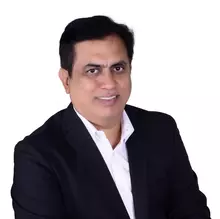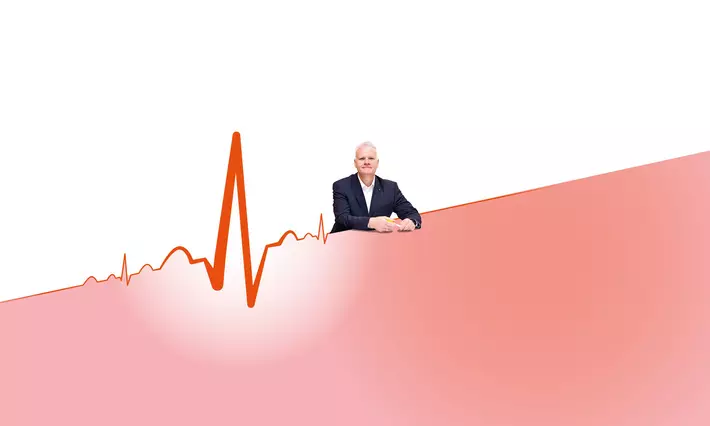Wind, visions, expertise

India ranks as one of the top 3 greenhouse gas emitters in the world. The government, however, has defined clear reduction targets and renewable energy is the key. Local technologies are being continuously expanded to generate and store this energy.
India finds itself in a challenging starting position when it comes to decarbonisation: After all, after China and the United States the country is the third largest emitter of greenhouse gases. Every year, the world's most populous country accounts for a total of 4 billion tonnes of CO₂ equivalents in net emissions. Around 70 per cent of India's emissions are caused by the six sectors of energy production, steel, automotive, aviation, cement and agriculture.
The McKinsey report "Decarbonising India: On the road to sustainable growth" estimates that annual emissions will escalate to 11.8 billion tonnes of CO₂ equivalent by 2070.
Although India has reduced its emissions intensity by 1.3 per cent per year over the last ten years, the pace of reduction is decidedly too slow.
The impacts of climate change are clearly noticeable on the ground: Since the 1980s, monsoon rainfall has decreased. Meanwhile, the frequency of heavy rain has trended upwards, while a two-degree Celsius rise in global average temperatures makes India's summer monsoon extremely unpredictable.
The vision and plan for the clean energy mission
This is why the government has become active in terms of environmental policies. With the "Viksit Bharat@2047" vision, the Indian government wants to transform the country into a developed nation by 2047 – just in time for its centenary year of independence. The plan includes goals such as economic growth, social progress, good governance and, above all, environmental sustainability.
In this context, the term "All Electric Society" (AES) has also arrived in India, where it is linked to the reduction of carbon emissions, the improvement of energy efficiency and the promotion of sustainability. In order to achieve this, the country is aiming to establish a fully electrified infrastructure for transport, heating and industrial processes and is investing comprehensibly in renewable energies, grid infrastructure, energy storage and electric mobility.
In the course of the UN Climate Change Conference in Glasgow 2021, the country also presented what is known as the Panchamrit Plan. Accordingly, among other things, the plan stipulates that 50 per cent of energy requirements should stem from renewable energy sources by 2030 and that net zero emissions should be achieved by 2070. Meanwhile, some of the plans are already being put into practice: The capacity of wind and solar has risen from around 26 gigawatts in 2014/15 to some 138 gigawatts in September 2024. As wind and solar power generation technologies are already available on a large scale, power generation would be the sector that could most quickly achieve potential net zero emissions. The mid-2050s is the time horizon envisaged here, whereby the transition to renewable sources of electricity would also reduce the cost of energy production.
Energy shortages and energy efficiency: Two sides of the same coin
Consequently, the Indian government is pursuing a two-pronged approach to meet energy demands, while minimising the growth in CO₂ emissions. On the generation side, the government is promoting the increased use of renewable energies in the energy mix, specifically through the already successfully growing shares of solar and wind energy.
On the demand side, leading Indian policymakers are endeavouring to use energy efficiently through measures under the Energy Conservation (EC) Act of 2001. The aim of the EC Act is to reduce the energy intensity of the Indian economy. Among other things, the act provides the regulatory framework for the standards and labelling of appliances and systems, the Energy Saving Ordinance for commercial buildings and energy consumption standards for energy-intensive industries. In this context, the National Mission for the Promotion of Energy Efficiency (NMEEE) also comes into play. The mission aims to strengthen the market for energy efficiency by creating a favourable regulatory and political framework, while also providing for the promotion of innovative and sustainable business models in the energy sector.
Challenging energy storage
However, a higher share of renewable energy in the energy mix presents challenges. This is because grid stability must be maintained, and the power supply must be guaranteed without interruptions. The availability of renewable energy sources, however, varies depending on the climate, time of day, season and geographical location. As a solution, energy storage systems (ESS) can be deployed to store excess capacity from renewable energies at certain points and then utilise this precisely during peak times of the day.
India is well aware of the relevance of energy storage: The National Electricity Plan (NEP) had already assumed in 2023 that 82.37 gigawatt hours of storage capacity would be required in 2026/27. This requirement is expected to rise to 411.4 gigawatt hours by 2031/32. Moreover, the demand for energy storage is forecast to rise to 2,380 gigawatt hours by 2047.
The wind energy success story
In India, wind turbines are playing an increasingly vital role in energy generation – and the country has modern technologies for manufacturing wind turbines: The current annual production capacity stands at around 15,000 megawatts. All the major global players in this sector are maintaining branches in the country. In total, there are more than twelve different companies active, including joint ventures under licence production, subsidiaries of foreign companies and Indian companies drawing on their own technology. The machine size has increased to 5.2 megawatts.
In this context, HARTING is also represented in India, maintaining a production location that is already supplying several connecting elements that can be deployed in the wind energy sector. In addition, HARTING India, with its Innovation and New Product Development Team, is already capable of developing products for regional requirements and can support the manufacturing team in terms of improving productivity and efficiency through process optimisation and waste reduction, among other relevant factors.

Thirumurthy Ventachalam
Position: Regional Product Manager, HARTING India


